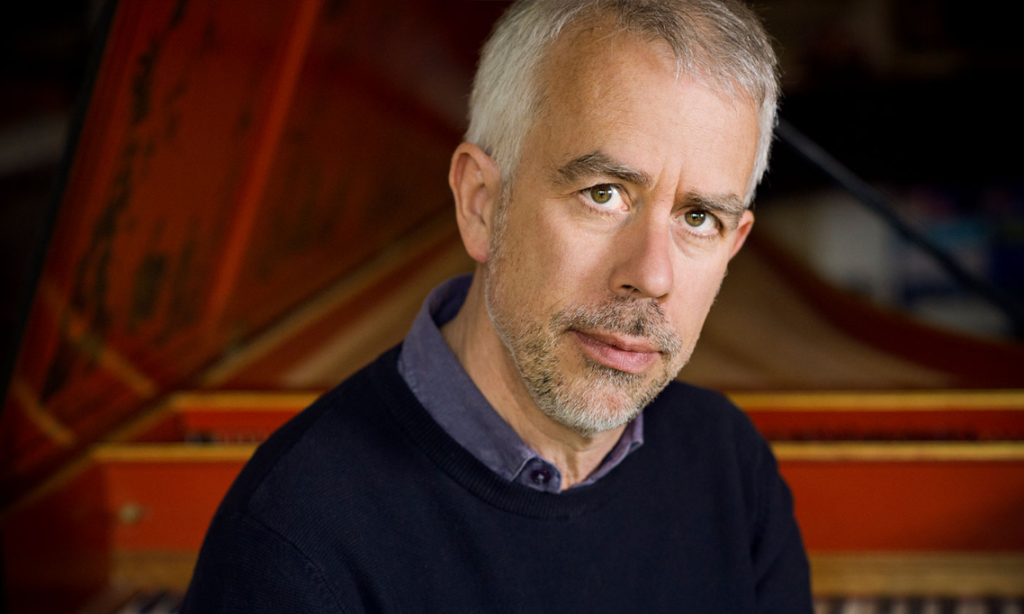Let’s continue our exploration of the “Aria with diverse variations”, with the second set of three variations leading up to the second canon in the series. Today we’re listening to Pierre Hantaï’s first recording of this work, from 1999. He plays a copy of a Michael Mietke harpsichord from the early 1700’s, built by Bruce Kennedy in Amsterdam in 1985.
Variation 4 is in ternary (3/8) rhythm, with a dance-like flair. The ground bass line is clearly audible at first, falling on the first beat of the bar the first three times and then playfully skipping an eighth on the fourth bar. As the piece progresses, the bass moves are syncopated, with the thematic note falling on the second or third beat of the bar. The upper two lines feature a motif with jagged wide leaps, imitatively and often in inversion to each other.
Variation 5, reminiscent of a Scarlatti sonata, is in two parts. At any given time, one of the lines has constantly moving sixteenth notes while the other voice jumps between the low and high registers, to be played by crossing hands. This variation is notated “for 1 or 2 keyboards”. Like in the previous one, the ground bass is easy to spot initially but it becomes less obvious as the movement develops.
Variation 6, per the work’s grand plan, is the canon at the second. The second voice starts one step higher than the first, and a bar later. The meter is 3/8 and the motif is a long note tied over into a descending scale on the second bar. Given the rapid decay of long notes on the harpsichord, the two voices become intermingled into what can be perceived as just one melodic line, moving upwards or downwards in single steps.
